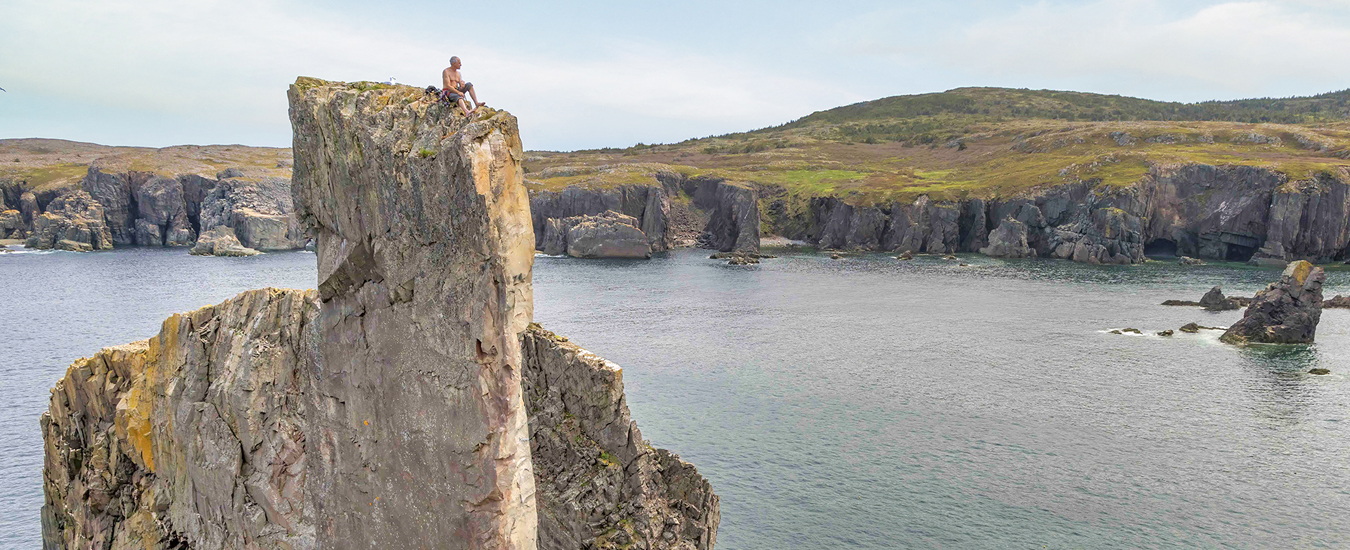Newfoundland’s Bonavista Peninsula is famous for its dramatic coastlines, icebergs, whales, and puffins. Its communities, often dotted with brightly-coloured houses, offer friendly accommodation to visitors from all over the world, coming to have the Newfoundland experience. On a recent trip with my wife, we ventured to Newfoundland to try our luck at finding icebergs and puffins. It was her first trip and it didn’t disappoint. The moment we arrived, the weather broke after months of rain, fog, and wind. The streets of St. John’s were alive with happy and excited locals exclaiming that they thought the sun would never return. We packed our car and headed to Bonavista for our adventure.
After a long and leisurely drive through picture-perfect fishing villages and beautiful vistas, we arrived. Settling into our accommodation, we set off exploring the area. We travelled to the most popular locations in the area first and asked locals for recommendations on what areas to explore. Following several recommendations to explore Cable John Cove, and other parts of the Discovery UNESCO Global Geopark, we decided to head there and check it out.
When we arrived, we quickly realized why it was so highly recommended. There are amazing panoramas, high sheer cliffs with dramatic rock features, sea caves, icebergs, and puffins. It was like Tourism Newfoundland had set the location up for the perfect photo shoot. The most stunning feature of the entire cove was a 35-metre-high sea stack locals call “the Chimney.”
As we walked over to the edge of the cliff to get a better view we noticed two guys climbing down the cliffs to the shore. This was no easy feat. I looked at my wife and said, “Those guys are crazy, anything for an Instagram photo nowadays”. As I looked more closely, I began to realize that they were not crazy, but climbers. They had brought down all the gear needed for an epic first ascent of the sea stack.
Luckily, our accommodations were just a kilometre or so from the cove, and we were booked there for the next three nights. I was excited to watch these guys attempt this impressive feat as I have climbed a bit and greatly appreciated the skill involved in pulling this off.
As we watched them setting up at the base of the chimney, various groups came and went. Time after time, we’d see the same reaction. People would walk towards the cliff, see the climbers, then rush over to see what they were up to and take photos. We chatted with the people as they arrived. At first, most were tourists, then a few locals arrived on four-wheelers. When we chatted with them, they told us no one had ever tried to climb the Chimney and were amazed that someone would even try. Word must have gone out in the community, as more and more locals began to arrive to witness the climb.

The pair of climbers continued to set up their gear and clear loose rock off the cliffs around them. The sound of the rocks falling down the cliff and into the ocean was like cannons, stirring hundreds of puffins from the water far offshore. The climbers began to ascend the massive sheer face of the chimney slowly, one man climbing and the other at the base holding the safety rope and passing up gear using a second rope.
The two worked all day, managing to get about 80 per cent of the way up the sea stack, setting gear, and chipping off loose rock as they rose. It was clear that they weren’t going to make it to the top.
Early the next morning we returned to check out the iceberg and puffins. When we arrived, we were surprised to see the two climbers, back again to pick up where they had left off. They only had about six metres to get to the top. I wanted to see them reach the summit, so we decided to stick around for a while until they did. After an hour or so, it became clear that the last three metres were extremely challenging. They worked the entire day using screws, hammers, spikes, and even drills to slowly climb the sheer face. We returned every couple of hours to see if they made it. Finally, at the end of the day, we returned just as they reached to top.
The entire time they were climbing, a lone seagull sat on top, not moving. When the first climber finally made it, he shouted to his climbing partner that the seagull was on a nest with two eggs. He shared the top for a while with the reluctant gull, who became quite comfortable with the climber after a few minutes. As I watched him taking photos I thought, “Talk about the ultimate selfie location.”
As night approached, I met the climbers as they were leaving. We chatted about climbing and Newfoundland, exchanging contact information to talk more later. I learned I was talking with Joe Terravecchia, a rock-climbing legend. Thanks to his efforts, the best climbers from all over the world have travelled to Newfoundland to climb some of the cliffs, seastacks and mountain faces of the Rock. From Maine, he had travelled to Newfoundland more than 20 times, finding and climbing new routes all over the island.
In climbing, the first person to climb a route/place gets to name it. When I asked Joe what he had named his route on the Chimney he said, “Bonavista Social Club,” referring to the local restaurant and the great social interactions he had while doing the climb. A perfect name for a great adventure.

